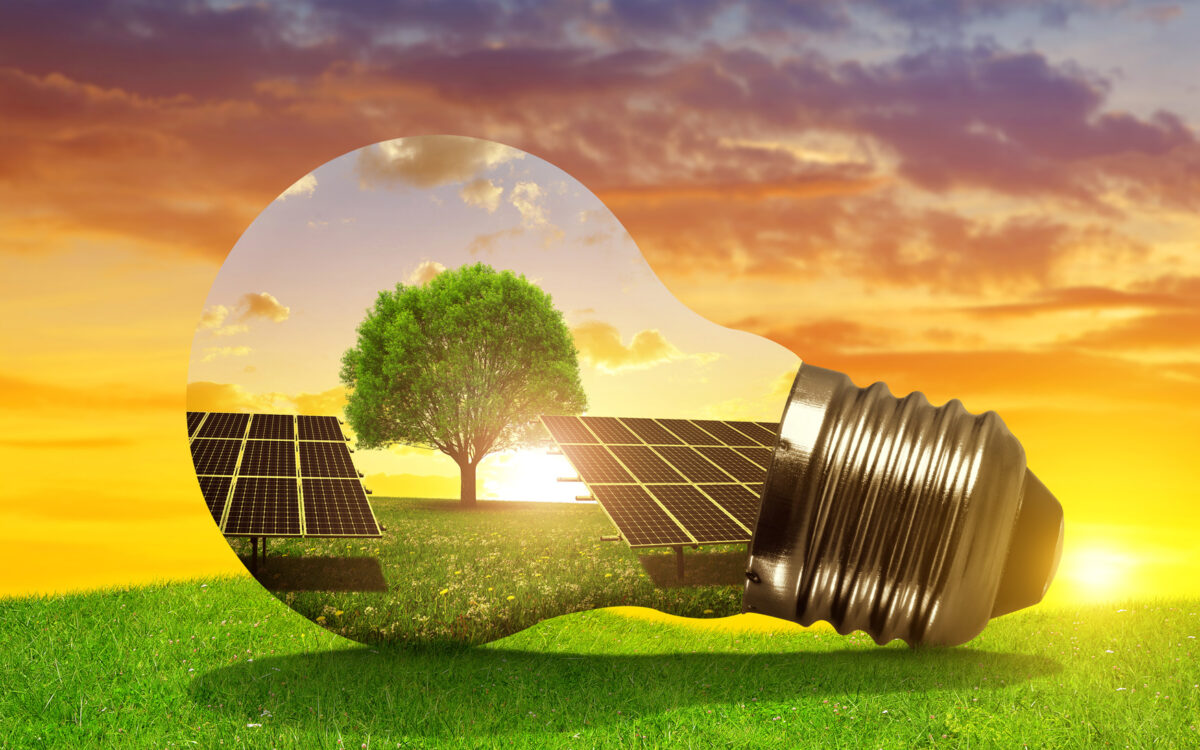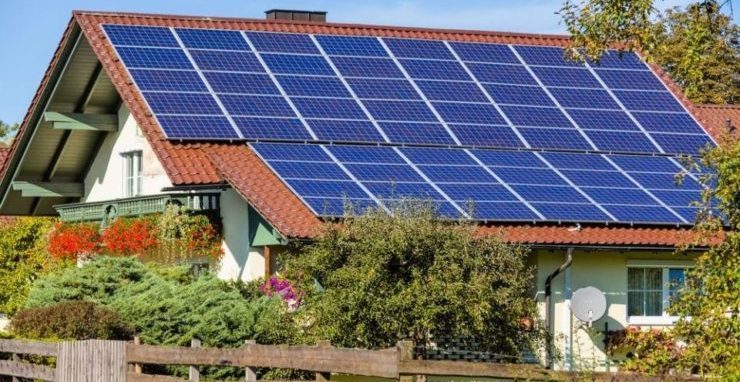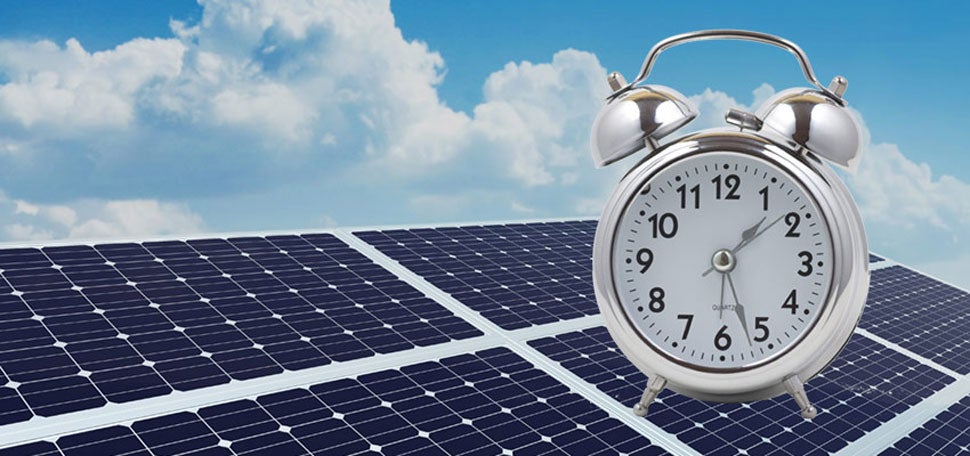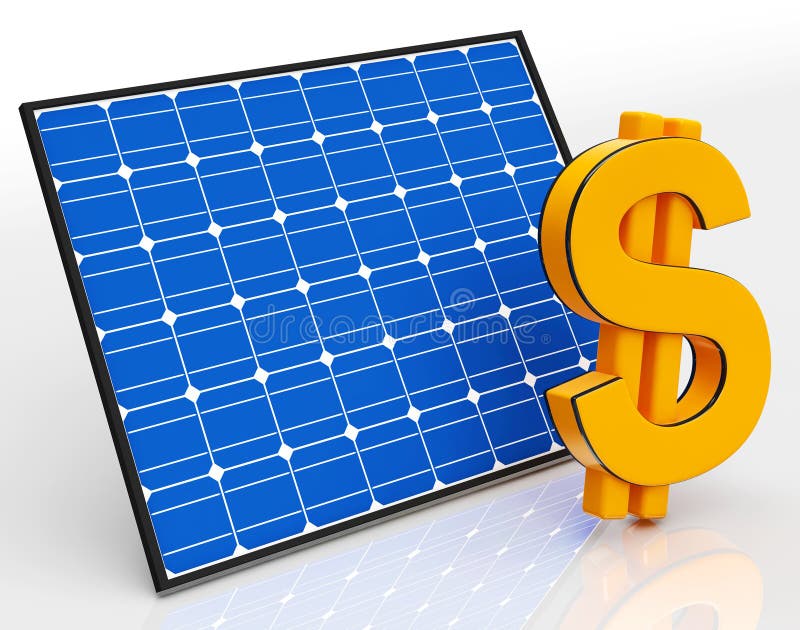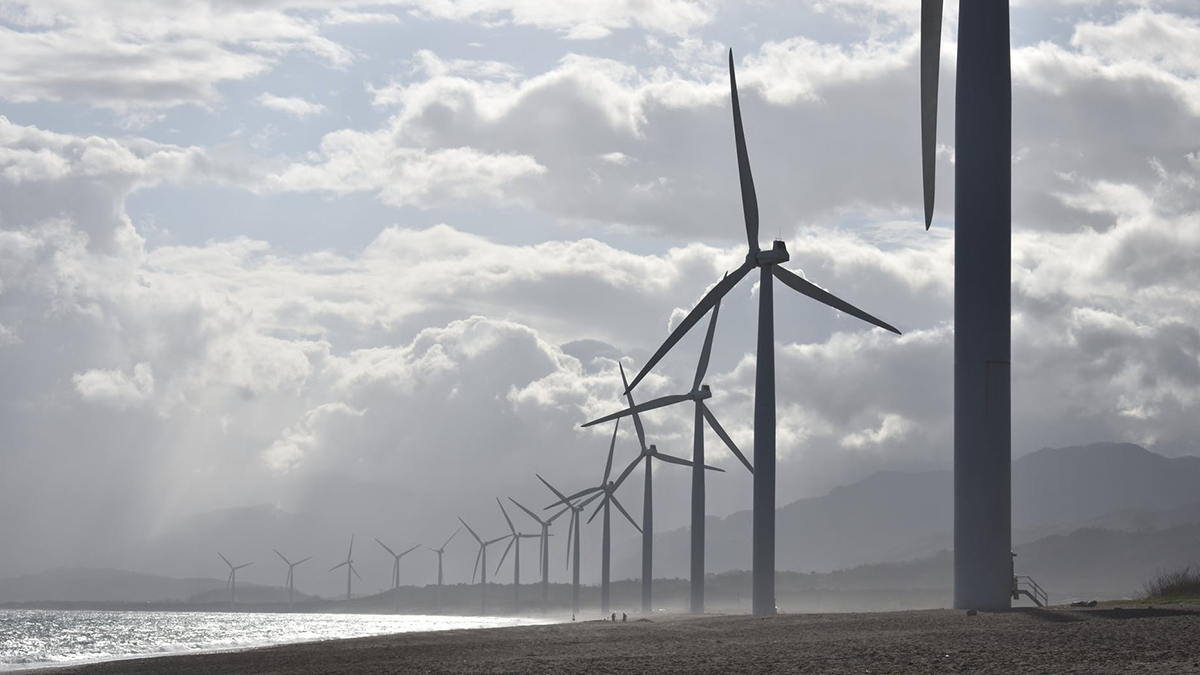Our sun is the origin of all life on Earth, and solar energy is useful to us in many different ways. Let’s explore the benefits of Solar Energy in our daily lives.
Solar energy is beaming light and heat from the Sun that is harnessed using several technologies to generate power. Solar energy is renewable in nature i.e. it will never deplete and is available in abundance. Solar energy is a clean, environmental-friendly, and renewable energy and its technologies are broadly categorized as either active or passive depending upon how they harness solar energy to convert it into solar power.
How does solar energy work?
- Solar energy is harnessed using photovoltaic (PV) panels or through mirrors that concentrate solar radiation to convert sunlight into electricity.
Let us take a brief look at how solar energy works:

- STEP 1: Sunlight activates Photovoltaic panels.
- STEP 2: The PV panels produce Direct current (DC)
- STEP 3: DC is converted into Alternating Current (AC) with help of an inverter.
- STEP 4: The electricity is utilized or exported to the grid.
- Solar power can also be used for heating to generate steam for turbines or household hot water systems. It is known as Solar-Thermal Power.

- STEP 1: Sunlight activates Photovoltaic panels.
- STEP 2: The PV panels accumulate the solar energy and produce Direct current (DC)
- STEP 3: The PV panels are integrated with the hot water system to heat the water.
- STEP 4: The hot water or steam is produced and utilized as required.
What is solar energy used for?
.jpg)
The sun offers two main types of energy – light, and heat – that are harnessed for many activities ranging from photosynthesis in plants to creating electricity with photovoltaic (PV) cells to heating water and food.
So, the uses of solar energy are listed below:
How to store solar energy?
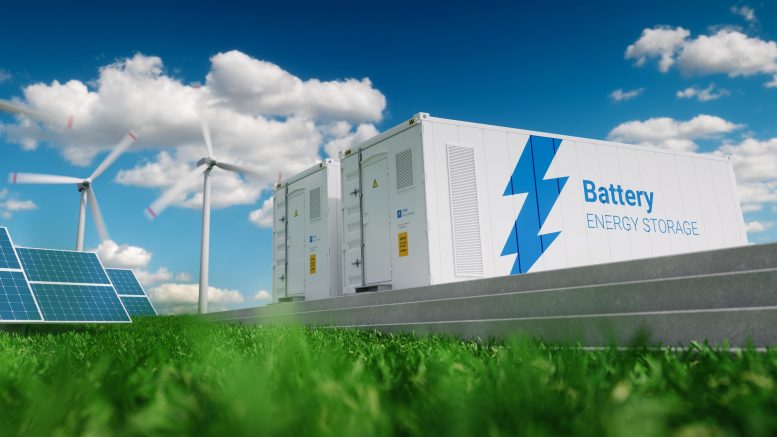
Storing solar energy is an essential element to get the most out of any solar panel system. It is efficient, cost-saving, and decreases fossil fuel emissions. Solar energy storage can be categorized as:
- Thermal Storage
- Battery Storage
- Mechanical Storage
What is thermal storage?
Thermal energy storage uses different mediums —water or molten salt — to absorb and retain heat from the sun. The heated medium is stored in an insulated system until the energy is needed, to boil water for energy generation.
What is battery storage?
Solar energy can be stored in electrochemical batteries. When solar energy is passed in a battery, an internal chemical reaction stores the energy. The reaction is reversed when the battery is discharged, allowing current to exit the battery. Lithium-ion batteries are most commonly used in solar applications in the case of in-house solar energy storage.
What is mechanical storage?
Mechanical storage methods transform surplus solar electrical power into mechanical power, which is converted back to electricity for future use. There are three prominent mechanical energy storage systems:
- Flywheel: This method uses surplus electricity to spin a flywheel, which later generates electricity to supply instant energy.
- Hydro-pump: Water is pumped uphill to a reservoir located above turbine generators. The water is allowed to flow through turbines and generate electricity.
- Compressed air: Compressed air is pumped into large vessels such as a tank or underground storage system which later generates electricity to supply additional energy during
What are solar panels?
- A solar panel, or photovoltaic module, is an assembly of photovoltaic cells mounted in a framework for installation. Solar panels use sunlight as a source of energy and generate direct current electricity. A collection of PV modules is called a PV panel, and a system of panels is an array (Source: Wikipedia)
- Every solar panel comprises small solar cells arranged in rows and columns to form solar panels that generate power.
- Every solar cell is made up of semiconductor material (most common silicon) which absorbs photons from the incident sunlight and gives out electrons that produce electricity.
- In general, domestic and commercial solar panels have 60 cells, 72 cells, 120 cells, and 144 cells (half-cut solar cells relatively new technology).
What are the types of solar panels?

- Mono-Crystalline Solar Panels
- Poly Crystalline Solar Panels
- Thin Film Solar Panels
- Concentrated Solar Panels (Concentration Photovoltaics)
- Building Integrated Photovoltaics (BIPV)
- Half Cut Solar Panels
- Bi-facial Solar Panels
- Passivated Emitter and Rear Cell or Passivated Emitter and Rear Contact (PERC Solar Panels)
How much energy does a solar panel produce?

- The efficiency of solar power produced by a solar panel depends on various factors as:
- Sunlight Intensity
- Cloud cover
- Temperature
- Latitude and Altitude of the location
- The orientation, Inclination, and location of the solar panel from direct sunlight.
- The energy conversion efficiency of the photovoltaic panel.
- Operation and Monitoring
- Maintenance
- Solar Panels range in wattage output from 50 watts to 500 watts.
- For example, on an ideal day, the solar panel receives 6 hours of direct sunlight. We consider common solar panel output of 300 watts.
Hence, 6 hours X 300 watts = 1800 watts or roughly, 1.8 Kilowatt-hours per day.
That’s approximately 600 to 650 Kilowatt-hours per year from a single solar panel!
Where can we install Solar Panels?
A solar panel can be installed anywhere that receives direct sunlight for the maximum amount of time in a day. Solar Panels should not be under shaded places – under trees or buildings.
Domestic Objective:
- Solar Panels installed on the rooftop (generally, North facing roof is preferable) will generate the maximum amount of electricity.
- One should take note that the roof should be 10o to 30o inclined for proper drainage of rainwater or debris.
Commercial Objective:
- Solar Panels are installed in large numbers on a particular piece of land to generate Solar Power for commercial use. This concept is known as Solar farms, Solar Park or Solar power plants.
- Sometimes, solar farms co-exist on the same land with conventional agriculture known as ‘Agrivoltaics.’
- In some cases, Solar farms share spaces with wind farms known as ‘Co-location.’
Are Solar Panels Durable?
Solar Panels look fragile, but don’t let that deceive you!
- Solar panels have a standard lifecycle of 25-30 years.
- Solar Panels can survive extreme weather conditions ranging from strong winds up to 140mph, heavy snow to golf ball-sized hail. Most manufacturers test solar panels to confirm their durability.
- It is unlikely to find a solar panel damaged due to weather conditions or sudden impact. Solar panels are highly durable.
What is the cost of Solar Energy?
According to the World Economic Forum (WEF), installing new solar panels is cheaper than a comparable investment in coal, natural gas, or other fossil fuel options
- The cost of solar has fallen over 20% over the past 5 years.
- Solar panel cost for a 10 kilowatt (kW)installation in the U.S. ranges from $17,760 to $23,828 after the federal solar tax credit, and the average price per watt for solar panels ranges from $2.40 to $3.22.
Solar Panel Price per Watt
The price per watt (PPW) of a solar system is the price that the purchaser of a solar panel will pay for every watt of solar being installed. Calculating the price per watt for a solar system is easy – it’s simply the gross system cost (contract value) divided by the number of watts in the system.

- Solar is more worth it now than ever before!
Source: https://www.solar.com/
Advantages of Solar Energy
- Pollution Free: Solar Energy virtually creates no pollution. There is no pollution generated during the process of generating solar energy from the heat coming from the rays of the sun.
- Abundant in Nature: Solar energy is available everywhere. It will never run out until the end of time, unlike fossil fuels which will eventually deplete within the next 100 years.
- No Fuel Requirement: Apart from the sun’s heat (which is free!) there is no fuel requirement to harness solar energy.
- Renewable energy: Solar energy is a renewable source of energy that is sustainable and totally inexhaustible, unlike finite fossil fuels.
- Minimum Maintenance: Once installed, solar panels are very low maintenance. This is because there are no moving parts in the solar They require basic monitoring as well as cleaning three or four times a year. Companies charge between $3 and $10 per panel.
- Reduces Electricity Bills: The excess energy is sold to the grid and consumers get compensated for the extra power feedback. This significantly reduces the electricity bills or you may not have to pay one!
- Power Can Be Stored And Used At Night: Some all-in-one systems come with solar batteries. These solar systems let you store the power you generate during the day and use it at night instead. When you store the power you become independent from the grid. Rather than buy energy, you can use the energy that has been stored.
- Can be installed anywhere: Solar panels can be installed practically anywhere that receives direct sunshine for most of the day and is not shaded by trees or buildings. Panels that face south will produce the most electricity, but your panels can also face east or west
- Easy to install: A typical solar roof-mounted system for a home can be installed within 2 days once a permit is obtained from your city or county. Once the racking and mounting system are on your roof, the solar panels and inverters can be quickly installed.
- Reduces Carbon Footprint: Solar energy decreases greenhouse gas emissions. Generating electricity with solar power instead of fossil fuels can dramatically reduce Carbon Footprint. Every kilowatt of green energy can reduce your carbon footprint by 3,000 pounds annually
- Increases Energy Security: Generating Solar Power reduces dependency on imported fossil fuels significantly. This will increase a country’s energy security.
- Can be installed in remote places: Solar energy is that it can be used in rural and remote areas. In these places, it is usually very expensive to deploy the electricity power grids and solar energy can be generated in ample amount here.
- Government subsidies: One of the biggest advantages of installing residential solar panels is a 30% federal tax credit on the total cost of a system. The credit could save the average homeowner $5,000 or more (depending on the size of the system).
Disadvantages of Solar Energy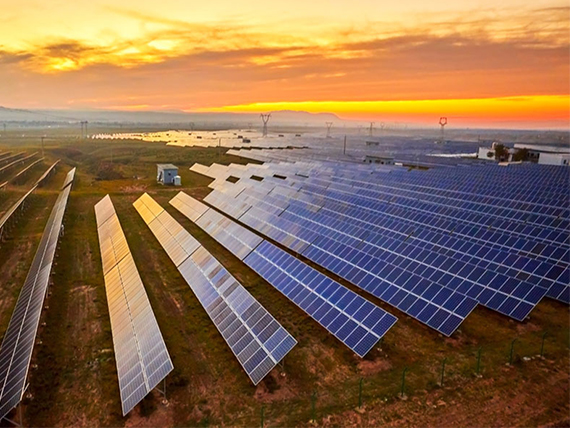
- Affordability: The initial cost of purchasing a solar system is fairly high but the cost of home solar systems has dropped dramatically in recent years, falling more than 70% in just the last decade. The costs of home solar batteries have dropped substantially as well. Also, government subsidies help to cut the installation to a significant extent.
- Weather Dependency: Clouds and storms restrict the amount of energy you can produce by blocking light rays that would have otherwise been absorbed by the solar Although, Monocrystalline solar panels are the efficient solar panels for cloudy weather.
- Greater land Footprint: Large acres of land are required for the deployment of solar energy plants and for capturing the energy coming from the sun. The land cannot be used for any other purpose. But the recent concept of “Agrivoltaics “has gained attention where conventional agriculture and solar farms co-exist reducing the solar energy land print significantly.
- Storage is expensive: The battery storage system options for storing solar energy as electrical energy are very expensive. But the World Energy Council’s report estimates that with the many new technologies in the pipeline, energy storage costs will fall by as much as 70% over the next 15 years, with solar in particular becoming more competitive as new battery technology drives prices down. The average energy capacity cost of utility-scale battery storage in the United States has rapidly decreased from $2,152 per kilowatt-hour (kWh) in 2015 to $625/kWh in 2018 and it is still on the decline.
- Non-Functional At Night: No solar energy can be produced by solar panels at night. It means that solar panels can only generate energy for 12 hours. Although, there are already talks about an ‘anti-solar panel’ that can produce power at night.
Futuristic gadgets powered by Solar Energy
We truly underestimate the power of the sun. Solar energy, despite being the most environment-friendly source of energy today, is not utilized as effectively as it should be. But few have experimented with the power of the sun, which has, in turn, resulted in some cool innovations. Here are some innovative solar gadgets you must check out.
1. Solar Powered Bike Locks

Skylock has made futuristic bike locks that work on solar power. The locks have a built-in solar panel which provides enough power for a week with just an hour of charging.
2. Solar Powered Backpacks

This backpack comes with a special feature which charges mobile and electronic devices. Thin-film solar nodules provide power in the range of about 4 Watts. All you’ve got to do is walk in the sun to get your devices recharged.
3. Organic Transit Elf

Organic Transit ElfA three-wheeled vehicle, which looks like an egg has a 100-Watt solar panel on its roof, an aluminum alloy frame, headlights, taillights, and a gasoline equivalent of 1,800 miles per gallon. The vehicle can go over 15 miles on a single charge.
4. Solar-Powered Tents
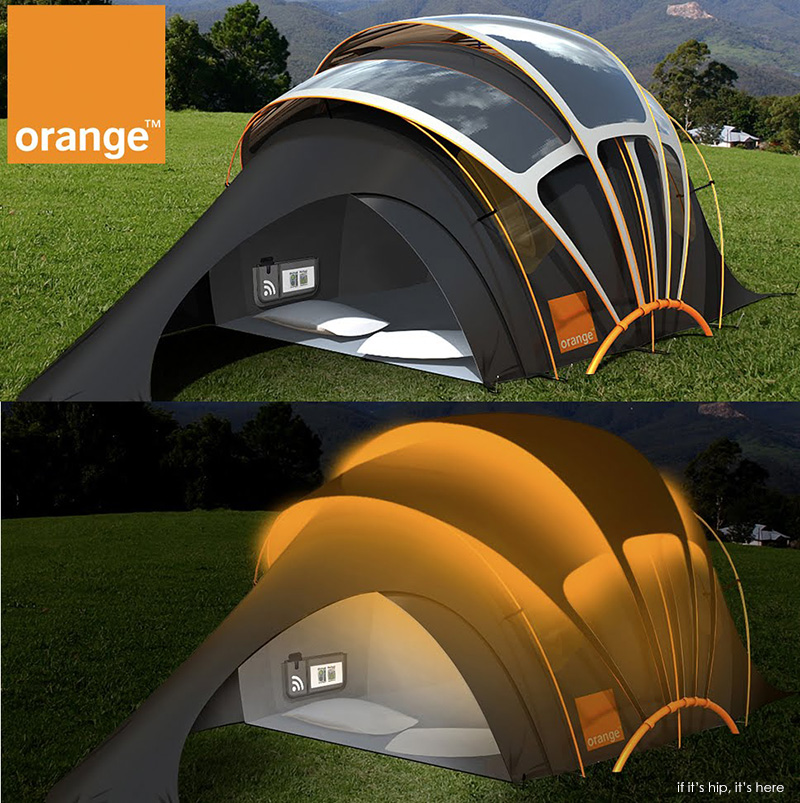
A company named Orange has designed a solar-powered tent that can fit four people and which works on photovoltaic cells. It soaks up the sun during the day and illuminates itself at night.
5. Solar Powered Movie Theatre

Touted as the world’s smallest solar power theatre, England’s Sol Cinema runs on solar power. The cinema-on-wheels stops wherever it’s sunny and starts showcasing movies.
6. Solio Charger
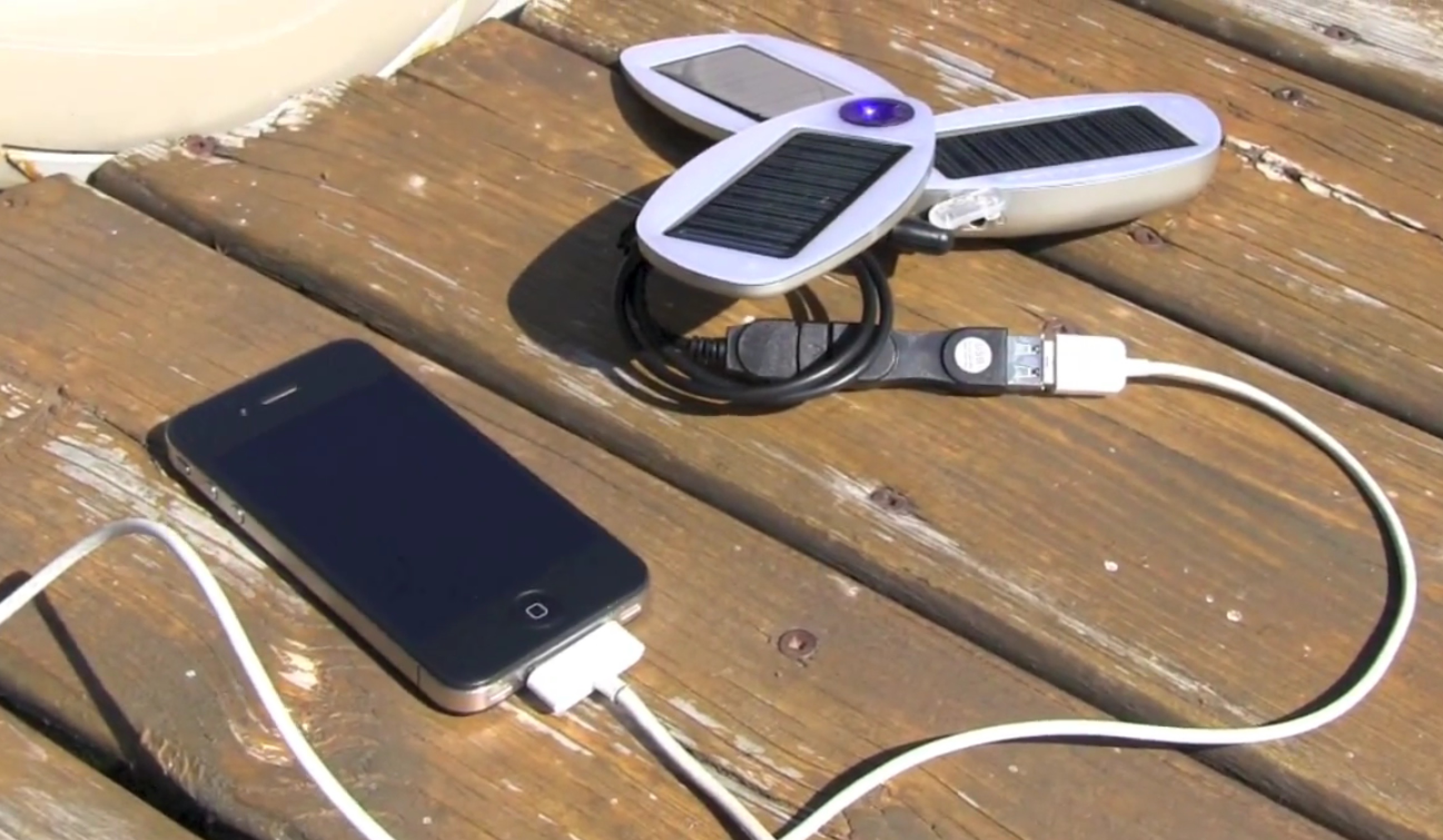
This petal-shaped solar charger charges phones, tablets, and multiple other devices. Once charged, the device can hold a charge for up to a year!
7. Solar Powered Boat
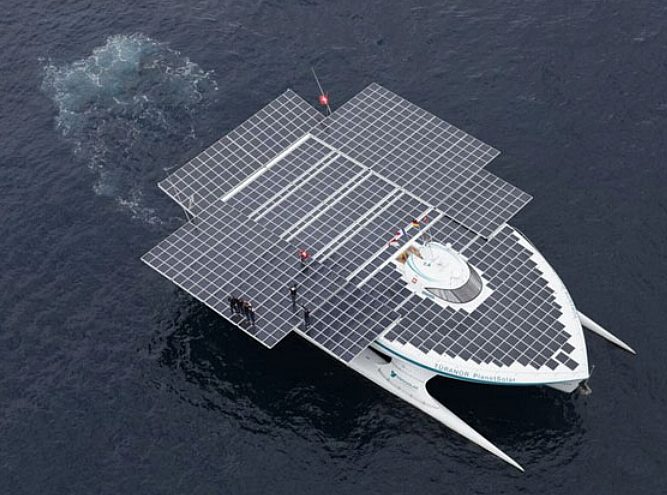
Germany’s Planet Solar is the world’s largest solar boat. The massive yacht is built in such a way that it captures 103.4 kW of solar energy to power the engine that merely needs 20KW. With solar power to boost the yacht up, it has a top speed of 27 kmph.
8. Solar Powered Electric Scooters
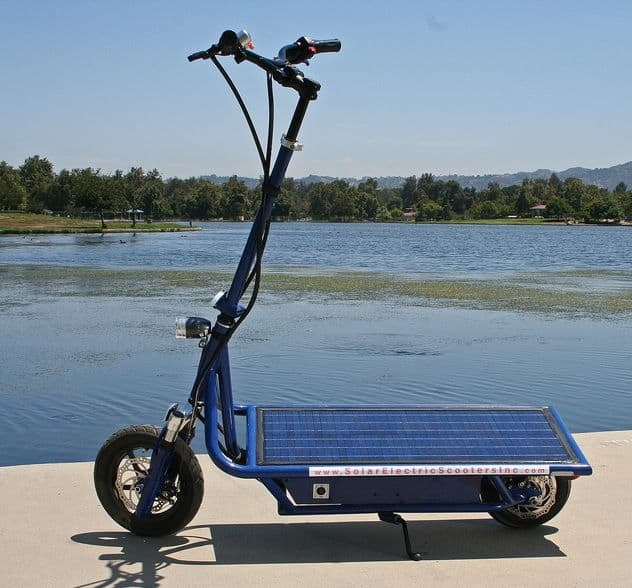
Riding a solar scooter to work is gaining popularity in the west. The environmentally friendly solar scooters are fun to drive and easy to charge. It takes around 8 hours to ‘sun up’ the scooter, after which, it works like a normal scooter.
Source: https://www.indiatimes.com/

Solar energy is being used in all aspects of the world.
NASA is using it for space exploration or solar farms to produce mass-energy.
Australia is using solar for transport, solar farms and now homeowners are taking advantage to slash their energy bills.
In 2020, the International Energy Agency announced that solar power is the cheapest form of electricity.
The future of solar is really bright!

